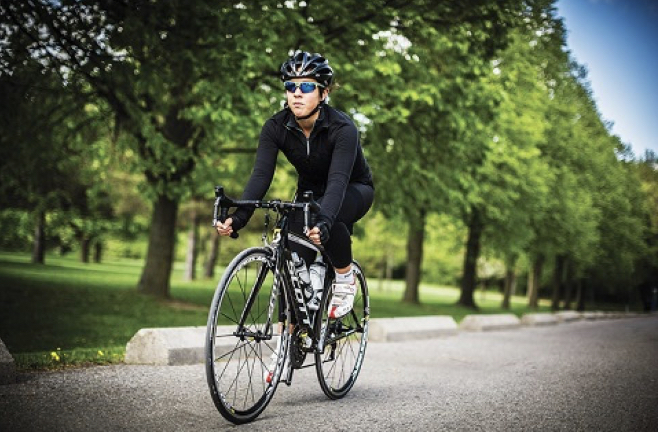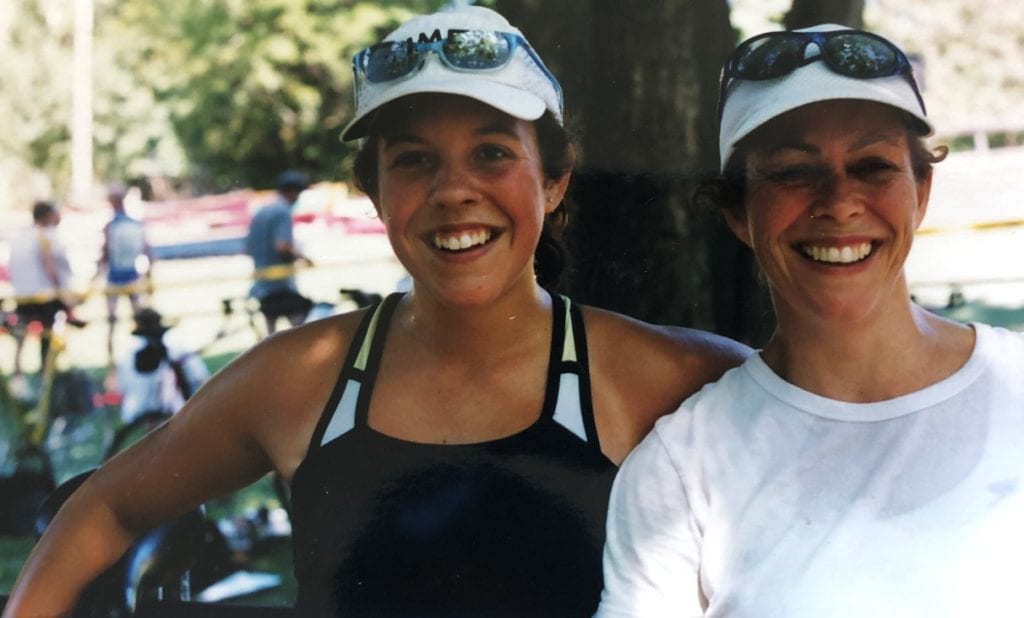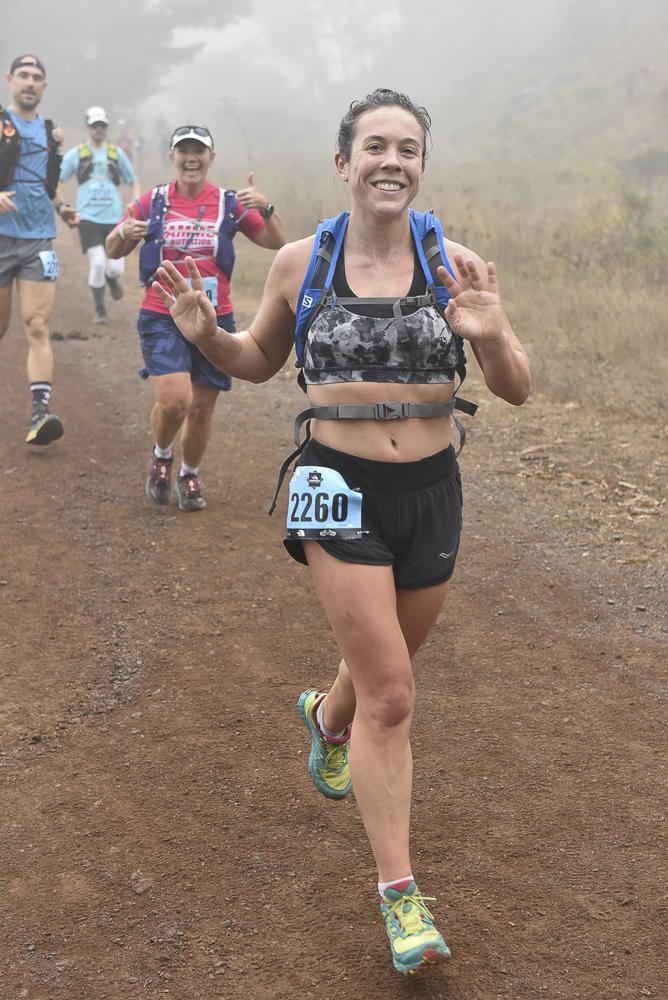Epilepsy and multisport: Glenna Fraumeni’s daily dose of awe

Multisport competition has taken on a much larger meaning for Glenna Fraumeni. No longer is it about pinpointing specific races, performing gut-busting training sessions in preparation, and then executing a laid-out plan required to stand on the podium. Now as the 35-year-old registered nurse from Toronto deals with epilepsy, her goal is pursuit of an active, healthy lifestyle that encompasses variety of movement, new adventures, travel, gratitude and a daily dose of awe.
“Since being diagnosed with epilepsy, I like to say that I am now training for life versus training for a specific race,” she explains candidly.
Fraumeni was introduced to multisport racing as a 16-year-old via her aunt, Patty Clune, who competed in one of the early iterations of the Ironman World Championship in Kona.

“She signed me up for a weekend of try-a-tris when I was in high school – the Milton women’s race and one in Burlington, and from then on I was hooked,” she remembers. “My aunt taught me that I could do whatever I wanted in sport. It was more about having fun and working hard.”
But, at 22, Fraumeni started having seizures where she “blanked out” and lost time. Too nervous to tell anyone for a while, she eventually saw her doctor and was referred to a neurologist, who made the diagnosis of epilepsy. That realization, by her own admission, affected every facet of her life.
“I had to learn about achieving a balance between giving to my body versus taking from it. Now I am very strict about getting in a lot of sleep (nine hours a night) and great nutrition. If I don’t get enough sleep, I choose to forgo a workout versus push through, although that’s not typically what I did before I had epilepsy. I came to understand that I’ll have a seizure if I ask too much of body without gifting it the benefits of sleep and good food.”
The diagnosis didn’t stop Fraumeni from competing. Since then she has competed in Ironman 70.3’s and various other multisport events, but those first try-a-tris remain her favourites.
“I was just so elated to have found a sport where I got to combine three of my favourite activities,” she remembers. “We had a couple family training days where we would do mock triathlons. It was just such a healthy way for a kid to learn to enjoy being active. Especially in our world now where we are pulled to look at screens so much, I am so thankful for those early races that were part of the building blocks for my active healthy lifestyle now.”

Nowadays Fraumeni doesn’t wear any type of monitor when she trains in order to pay close attention to her body. Intuition has become her closest ally.
“It also takes the pressure off me to achieve times I might have before I had epilepsy when I could push myself in a different way. I still work really hard, but I no longer get caught up with numbers.”
Her epilepsy medications to control seizures often cause drowsiness. She opts to take lower doses more frequently throughout the day and eats more fat versus carbohydrates.
“I incorporate a lot of more healthy fats into my diet and not necessarily the higher carbohydrate diet people think of when they think of athletes. I can tolerate heavier foods for long endurance races where some people might feel sick. I can fuel myself to go all day.”
Fraumeni views changes in her athletic focus as a healthy progression.
“These days I seem to feel more excited to get out to remote areas than be solely focused on the precise training efforts. I have always enjoyed being outside as much as I can, but now I focus even more on the beautiful places I get to see.” She regularly spends wintertime in The Bahamas, and last summer she tackled the West Coast Trail on Vancouver Island carrying a 40lb pack for 80kms of rugged trekking.
“It was physically really challenging and awesome training. I got to see whales everyday and now have an entirely new appreciation for environmental conservation. It was for me a new way of moving my body, no less strenuous, but so much more expansive and in a way meditative.”
This past fall she participated in her first endurance race in quite some time – a 50 km trail run north of San Francisco in the Merin Headlands with lots of elevation gain.
“I was really nervous to get back into it, and, while my time was so much slower, I raced really well. I kept reminding myself- you are here to have fun and you are here to stay safe and not have a seizure. So I really narrowed in on good hydration, pacing myself and remembering to smile and enjoy the gorgeous views.” She cried when crossing the Golden Gate bridge towards the end of the race. “I was just so elated to be racing and capable of finishing a race like that without having a seizure. My efforts to balance my desire to be an endurance athlete alongside a person with epilepsy had produced what I’ve been after for so long. And, while some athletes might say ‘my hard work paid off’ when they’re in the top three of their age group, for me ‘my hard work paid off’ means I finished safely and feeling good.”
Fraumeni has come to terms with the reality that these days, in any event she competes in, she may have to pull out because something doesn’t feel right.
“I don’t take a lot of chances— too cold, too hot, too tired, there are a lot of reasons I might need to stop. So, my pre-race thoughts are always about remembering to be as in tune with my body and as accepting about what it can achieve on any given day.”
She acknowledges that racing long distances necessitates fatigue and depletion, aching muscles and swollen feet.
“I say to myself, ‘Hey, is this normal and could I walk or slow down for a bit and feel a little better?’ If the answer is yes, then on I go, but if I can’t straighten myself out and know that I will cross the finish line standing up with a smile I know that it is time to stop. I want to choose activities in life that help me feel good about myself not tear me down because I’m in it for the long haul.”
To fellow athletes living with chronic illness, Fraumeni reiterates the importance of both choosing a sport that brings immense joy and to always show gratitude.
“Be confident and proud of your achievements and the respect you must develop for your body and its limits. We’re always thinking about what we can improve on with our bodies and it’s important to be just be plain thankful.”
Additionally, being flexible with training is important. She cannot run in heat, so in the middle of summer she swims more or uses a shady staircase in the valleys of Toronto to do stair repeats.
“I don’t stress about it. I’m addicted to the idea of moving my body in lots of ways, so on days when I am feeling off I opt for slower things – yoga, meditation, stand up paddle boarding, maybe a bike ride to do errands.”
Fraumeni adds the necessity of creating a “tribe,” a group of realistic people in your life whom you trust, including your doctor. “These are the people you will need to help you plan and make decisions. And you help them with their life pursuits too. It’s a two-way street.”
Above all, she says, allow yourself to be inspired by “a daily dose of awe” – a phrase from an article printed some years back in the New York Times that resonated for her.
“We forget to be amazed by the simple things. Be amazed with yourself. Be amazed with all you are achieving even if it feels like other athletes are achieving more. It can be challenging, but it’s all about mindset.”
Fraumeni hopes to take on some Xterra and trail races this year, and has just received a permit to hike the Wonderland Trail in Washington State.
“I have hopes of celebrating my next birthday doing a whole bunch of sports in one day with friends and family and raising money for Epilepsy Toronto.”
Living with epilepsy has been an enlightening journey for Fraumeni. Her over-arching sentiment is refreshing; that whatever you do, there simply has to be joy.
“My young brother and cousin both passed away in the last few years and I work really hard to remind myself that life is just so precious. So have a good time. Be nice to yourself. Have fun.”
This race originally appeared in the May, 2020 issue of Triathlon Magazine Canada.
